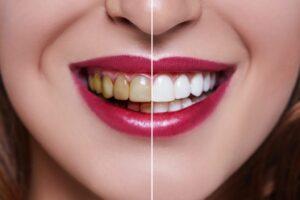Blog Highlights:
- Dental crowns are the next level of damage control for your teeth
- The porcelain crown resembles an actual tooth and matches the natural color of your teeth, creating an appealing visual effect
- Your dentist can help you decide which crown is best for you
Sometimes the damage to a tooth or teeth is too extreme for regular fillings. If this is the case, it is time to start looking into dental crowns. Dental crowns are the next level of damage control for your teeth. In general, a dental crown is placed over the damaged tooth. It protects the tooth from future erosion and decay and can improve its shape and color. There are several different types of dental crowns to consider:
E-MAX (Porcelain) Crowns
If you have the time and money, the E-MAX or porcelain crown is perhaps the best type of crown. This crown is made out of a synthetic material called ceramic and is long-lasting. The porcelain crown resembles an actual tooth and matches the natural color of your teeth, creating an appealing visual effect. With a porcelain crown you don’t run the risk of metal poisoning and you are not likely to experience cracks or fractures.
Metal Crowns
Metal crowns were a popular option for many years. Made out of palladium alloy, gold alloy, or some amalgam of metal, these crowns are strong and are the most long-lasting type of crown. But major drawbacks include an unaesthetic appearance and potential mercury exposure, which can be harmful to your body. In fact, countries like Sweden have banned the use of metal crowns. If you have allergies to metal, do not choose metal crowns.
Porcelain Fused to Metal Crowns
With the combination of porcelain and metal, this crown is very strong, but it has some negative aspects. When the crown is placed 1.5 mm of the tooth is removed to make room for the double-layered crown. Over time the metal may begin to show through the porcelain layer, making your teeth appear dark. Additionally if you experience any gum recession later in life, the metal may start to show at the gum line.
Resin Crowns
The Resin Crown should be avoided at all costs. It is inexpensive and it will match the natural color of your tooth, but it is made out of the same material usually used for fillings. It is not designed to cover an entire tooth and is vulnerable to fractures. It may cost more money in the long run if you have to constantly replace it.
Zirconia Crown
Like the porcelain crown, the Zirconia crown is durable, long-lasting, and aesthetically pleasing. Out of all of your options, this crown allows for the most preservation of original tooth matter. The disadvantage of the Zirconia crown is that it can cause some friction against the roots of the teeth, which can lead to painful root damage.
Your dentist can help you decide which crown is best for you. No matter what crown you choose to use, it can take up to two weeks to create them. Plan to visit your dentist a few times to complete the process.








